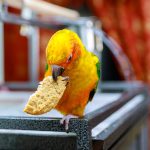1. Understanding Legal and Airline Regulations
Traveling with exotic pets can be exciting, but it also comes with specific legal and airline regulations you must follow. Whether youre flying domestically or internationally, understanding these rules is essential to ensure a smooth journey for both you and your pet.
Overview of U.S. Laws on Exotic Pet Travel
The United States has strict regulations regarding the transportation of exotic animals. These laws vary by species, state, and even city, so its crucial to research ahead of time. Some animals are protected under the Endangered Species Act (ESA) or the Convention on International Trade in Endangered Species (CITES), which may require special permits.
Common Permits for Exotic Pet Travel
| Permit Type | Description | Where to Apply |
|---|---|---|
| CITES Permit | Required for internationally protected species | U.S. Fish and Wildlife Service (USFWS) |
| USDA Animal Health Certificate | Ensures the pet meets health requirements | Licensed Veterinarian & USDA Approval |
| State-Specific Permits | Certain states have additional restrictions | State Wildlife or Agriculture Departments |
Airline Policies on Exotic Pets
Airliness have different rules when it comes to exotic pets. Some allow them in cargo, while others prohibit them entirely. Its important to check with your airline before booking your flight.
Key Airline Restrictions
- Cargo vs. Cabin: Most airlines only allow common pets like cats and dogs in the cabin. Exotic pets often need to travel in cargo.
- Banned Species: Some airlines prohibit reptiles, amphibians, or other exotic animals due to safety concerns.
- Carrier Requirements: Airlines may have specific size and ventilation requirements for pet carriers.
- Papers & Documentation: Health certificates, import/export permits, and proof of vaccinations may be required.
Tips for a Smooth Travel Experience
If youre planning a trip with your exotic pet, here are some key steps to take:
- Check Laws Early: Research federal, state, and international laws well in advance.
- Select an Airline Carefully: Contact the airline directly to confirm their pet policy.
- Prepare Required Documents: Gather all necessary permits and health certificates before traveling.
- Create a Comfortable Carrier: Ensure your pets carrier meets airline regulations and keeps them safe during transport.
- Smooth Security Checks: Be ready for TSA inspections and know how to handle security procedures with your pet.
Navigating legal and airline regulations might seem overwhelming at first, but careful planning can make the process much easier. By understanding these rules ahead of time, you can ensure a hassle-free trip for you and your exotic pet.
2. Choosing the Right Travel Carrier and Equipment
When traveling with an exotic pet, selecting the right carrier and equipment is essential to ensure their safety, comfort, and well-being. Unlike traditional pets, exotic animals often have unique needs that require special enclosures and accessories. Below are some guidelines to help you choose the best travel setup for your pet.
Consider Your Pet’s Specific Needs
Every exotic pet has different requirements based on its species, size, temperament, and environmental needs. Here are a few key factors to consider:
- Ventilation: Ensure the carrier provides adequate airflow without exposing your pet to direct drafts.
- Security: The enclosure should be escape-proof but not restrictive.
- Comfort: Include soft bedding or materials that mimic their natural habitat.
- Temperature Control: Some exotic pets require heating pads or insulation during travel.
Selecting the Right Carrier
The type of carrier you choose depends on your pet’s species. Below is a guide to help you select the best option:
| Pet Type | Recommended Carrier | Additional Considerations |
|---|---|---|
| Reptiles (snakes, lizards) | A sturdy plastic or acrylic enclosure with secure ventilation | Add heat packs if necessary; avoid extreme temperature changes. |
| Birds (parrots, finches) | A small travel cage with perch and proper ventilation | Cage covers can help reduce stress during travel. |
| Pocket Pets (hamsters, guinea pigs) | A well-ventilated plastic or wire carrier with bedding | Avoid excessive movement inside; secure water bottles properly. |
| Aquatic Animals (fish, turtles) | A spill-proof container with aeration options | Avoid long trips without proper oxygenation solutions. |
| Arachnids & Insects (tarantulas, stick insects) | A small escape-proof container with air holes | Avoid jostling; keep humidity levels stable. |
Essential Travel Accessories
Your exotic pet may need additional accessories to stay comfortable while traveling. Consider these items:
- Bedding and Substrate: Helps create a familiar environment for comfort.
- Portable Water and Food Containers: Prevents dehydration and ensures proper nutrition.
- Thermal Packs or Cooling Pads: Useful for temperature-sensitive species.
- Cage Covers or Shade Cloth: Reduces stress by limiting visual stimuli during transit.
- Suction Cup Bowls or Secured Feeding Trays: Prevents spills in moving vehicles.
TSA and Airline Regulations
If flying with your exotic pet, always check airline policies regarding acceptable carriers and required documentation. Some airlines have specific size restrictions for enclosures and may require health certificates for transport. Its best to confirm requirements well in advance to avoid last-minute issues.
Tips for a Stress-Free Journey
- Introduce Your Pet to the Carrier Early: Let them get accustomed to it before travel day.
- Avoid Overcrowding: Give your pet enough space but not too much room to move around excessively.
- Keep Noise Levels Low: Exotic pets can be sensitive to loud noises and sudden movements.
- Monitor Temperature Conditions: Ensure the environment remains within a safe range for your pet’s species.
Selecting the right carrier and equipment is crucial when traveling with an exotic pet. By considering their specific needs and preparing appropriately, you can make the journey safer and more comfortable for both you and your pet.

3. Health and Well-being Considerations
When traveling with exotic pets, ensuring their health and well-being should be a top priority. Exotic animals can be more sensitive to changes in their environment, so taking the right precautions will help keep them safe and comfortable throughout the journey.
Veterinary Checkups
Before you travel, schedule a visit to an exotic pet veterinarian. A thorough checkup can help identify any potential health concerns that may be aggravated by travel. Your vet may also provide necessary vaccinations, prescribe medications for stress or motion sickness, and offer specific travel advice tailored to your pet’s species.
Proper Hydration and Nutrition
Maintaining proper hydration and nutrition is essential while traveling. Different exotic pets have unique dietary needs, so plan accordingly. Here’s a quick guide:
| Pet Type | Hydration Tips | Food Considerations |
|---|---|---|
| Reptiles (e.g., snakes, lizards) | Mist their enclosure or provide a water dish. | Avoid feeding large meals before travel. |
| Birds (e.g., parrots, finches) | Use spill-proof water dispensers. | Bring familiar foods to reduce stress. |
| Small Mammals (e.g., ferrets, guinea pigs) | Carry a portable water bottle. | Avoid sudden diet changes. |
| Aquatic Animals (e.g., fish, turtles) | Keeps tanks aerated; avoid extreme temperature shifts. | Avoid overfeeding before transport. |
Managing Travel Stress
Exotic pets are highly sensitive to stress, which can impact their health during travel. Here are some ways to minimize it:
- Create a Comfortable Travel Environment: Use a secure, well-ventilated carrier with familiar bedding or hiding spots.
- Avoid Loud Noises and Sudden Movements: Keep your pet in a quiet part of the vehicle and cover carriers if needed to reduce visual stimuli.
- Mimic Their Natural Habitat: Maintain appropriate lighting, humidity levels, and temperature settings for your pet’s species.
- Soothe with Familiar Scents: Placing a piece of cloth from their regular habitat inside the carrier can help them feel at ease.
- Pace Travel Stops Appropriately: If possible, take breaks to check on your pet’s well-being without exposing them to unnecessary stressors.
The Importance of Monitoring Your Pet During Travel
No matter how well you prepare, always monitor your pet closely during the trip. Watch for signs of distress such as excessive panting (in birds and small mammals), refusal to eat or drink, lethargy, or erratic behavior. If you notice any concerning symptoms, consult a vet as soon as possible.
4. Dealing with Transportation Challenges
Traveling with exotic pets comes with unique transportation challenges, whether by car, plane, or across international borders. Understanding the best travel options and preparing properly can make the journey smoother for both you and your pet.
Ground Travel: Road Trips with Exotic Pets
Driving can be one of the easiest ways to transport exotic pets, but it still requires careful planning. Ensure your pet is in a secure, well-ventilated carrier that prevents escape. Temperature control is crucial, especially for reptiles and amphibians that rely on specific climate conditions.
Tips for Road Trips:
- Use a sturdy, escape-proof carrier suited for your pet’s needs.
- Keep the vehicle temperature stable; avoid direct sunlight on the carrier.
- Plan rest stops in quiet areas to check on your pet.
- Bring enough food, water, and any necessary heating or cooling elements.
- Avoid loud music or sudden movements that might stress your pet.
Air Travel: Flying with Exotic Pets
Flying with an exotic pet can be complicated due to airline regulations and restrictions. Some airlines allow small exotic animals in the cabin, while others require them to travel as cargo. Always check with the airline well in advance to understand their policies.
Common Airline Policies for Exotic Pets:
| Airline Policy | Description |
|---|---|
| In-Cabin Travel | Only small pets (like some reptiles or birds) are allowed; must fit under the seat. |
| Cargo Hold | Larger animals may need to be transported in a temperature-controlled cargo area. |
| Health Certificates | Most airlines require a vet-issued health certificate before travel. |
| Banned Species | Some airlines prohibit certain species due to safety concerns. |
Tips for Air Travel:
- Book a direct flight whenever possible to reduce stress and handling time.
- Ensure your pet’s carrier meets airline size and ventilation requirements.
- If traveling in cargo, confirm that the hold is climate-controlled and safe for animals.
- Label the carrier with contact information and special care instructions.
- Give your pet time to get used to its carrier before travel day.
International Travel: Crossing Borders with Exotic Pets
Bringing an exotic pet into another country requires thorough research. Many countries have strict import regulations, quarantine laws, and required permits. Failure to comply could result in long delays or even confiscation of your pet.
Key Considerations for International Travel:
- Import Permits: Some countries require special permits to bring exotic pets across borders.
- Quarantine Requirements: Certain species may need to be quarantined upon arrival.
- CITES Regulations: If your pet is listed under CITES (Convention on International Trade in Endangered Species), additional documentation is necessary.
- Microchipping & Identification: Some countries mandate microchipping or other forms of identification for imported animals.
- Vaccination & Health Checks: A veterinarian-issued health certificate may be required before departure.
Tips for International Pet Travel:
- Research country-specific regulations months before your trip.
- Work with a specialized pet relocation service if needed.
- Ensure all paperwork is completed and verified by authorities before departure.
- If quarantine is required, prepare a plan for your pet’s care during this period.
Navigating transportation challenges when traveling with exotic pets takes time and preparation. Whether youre driving, flying, or crossing international borders, understanding regulations and ensuring your pets comfort will help make the journey as smooth as possible.
5. Accommodation and Destination Readiness
Finding pet-friendly lodging when traveling with exotic pets can be tricky. Many hotels and rentals have strict pet policies, often focused on cats and dogs. Exotic pets, like reptiles, birds, or small mammals, may not always be welcome. Here’s how to find the right place and prepare your destination to ensure a smooth trip.
How to Find Pet-Friendly Lodging
Before booking accommodations, research hotels, vacation rentals, or even campgrounds that allow exotic pets. Contact the property directly to confirm their pet policy and any restrictions.
Tips for Finding Exotic-Pet-Friendly Lodging:
- Check specialty travel websites: Websites like BringFido or Airbnb allow you to filter for pet-friendly stays, but you may need to ask about exotic pets specifically.
- Call ahead: Even if a hotel claims to be pet-friendly, confirm whether they allow exotic animals.
- Consider extended-stay hotels: These often have more flexible pet policies than standard hotels.
- Look into small inns or private rentals: Owners may be more accommodating if you explain your pet’s needs.
Preparing Your Destination for Your Exotic Pet
Your pet’s environment at your destination should mimic their home setup as closely as possible. This helps reduce stress and ensures their well-being.
Checklist for Destination Readiness:
| Category | Preparation Tips |
|---|---|
| Caging & Housing | If traveling with a reptile or bird, bring a portable enclosure or check if the lodging allows setup space. |
| Temperature Control | If your pet requires specific temperatures (e.g., reptiles), bring heat lamps or heating pads. |
| Noisy Environments | Avoid places near busy roads or loud areas if your pet is sensitive to sound. |
| Local Veterinary Care | Research exotic animal vets near your destination in case of emergencies. |
| Bedding & Substrate | If your pet needs special bedding (e.g., sand for reptiles), bring enough for the trip. |
| Food & Water | If your pet requires specific food, pack enough or check availability at local stores. |
Avoiding Common Issues at Accommodations
A few extra steps can prevent problems with hotels or rental hosts:
- Curtain off enclosures: If housekeeping is provided, keep your pet’s area private to avoid alarming staff unfamiliar with exotic pets.
- Avoid free-roaming: Many accommodations prohibit letting animals roam freely—use enclosures where required.
- Clean up thoroughly: Be respectful by leaving no trace of your pet behind when you check out.
A little planning goes a long way in ensuring your exotic pet’s comfort while traveling. By choosing the right lodging and preparing properly, you can make your trip enjoyable and stress-free for both you and your unique companion!


